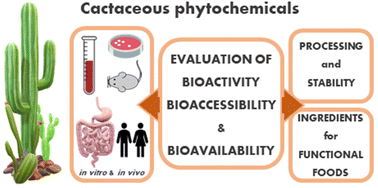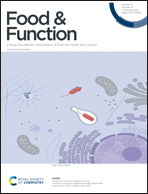Cactaceae plants as sources of active bioavailable phytochemicals
Abstract
Arid-land plants from the Cactaceae family are endemic to the Americas and cultivated worldwide. Cactaceous plants and their fruits contain phenolic compounds, betalains, vitamins, carotenoids, minerals, and soluble fiber. Edible cactaceous matrices can be considered functional foods since their consumption may confer health benefits. These plants could be a source of novel bioactive compounds relevant to the area of phytomedicine. However, consumption of high concentrations of active molecules is not necessarily correlated to beneficial physiological effects because phytochemicals must be released from the food matrices under physiological conditions, resist digestion-associated chemical transformations, and remain in their active state in systemic circulation until the target tissues are reached. Notably, although digestion may either increase or decrease the bioactive phytochemicals’ activity and stability, non-absorbed compounds may also be relevant for human health. Additionally, food matrices’ type and composition and their technological processing operations may influence the compounds’ release, stability, and accessibility. Thus, this review provides insights on the feasibility of using Cactaceae plants as sources of functional compounds. It is focused on compounds’ bioactivity, bioaccessibility, and overall bioavailability after their metabolic transformation. Also, it addresses the influence of food processing on bioactive compounds. Many Cactaceae species are unexplored, and our understanding of how they confer health benefits is limited. To better understand the physiological relevance, nutraceutical potential, and therapeutic feasibility of cactaceous bioactive phytochemicals, future research should focus on the metabolic stability and safety of these compounds, as well as their assimilation mechanisms (absorption, distribution, and metabolic fate).

- This article is part of the themed collection: Food & Function Review Articles 2022


 Please wait while we load your content...
Please wait while we load your content...